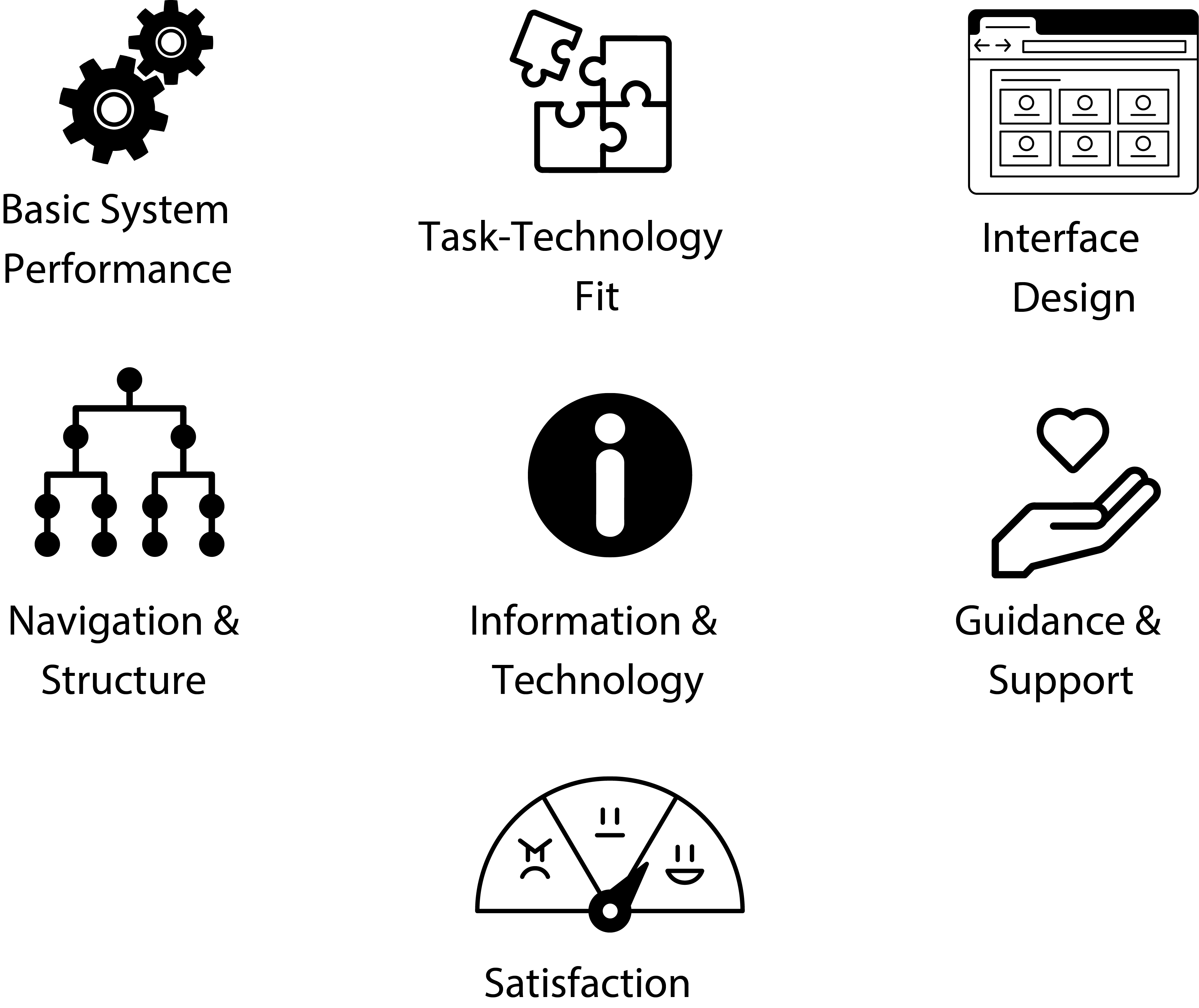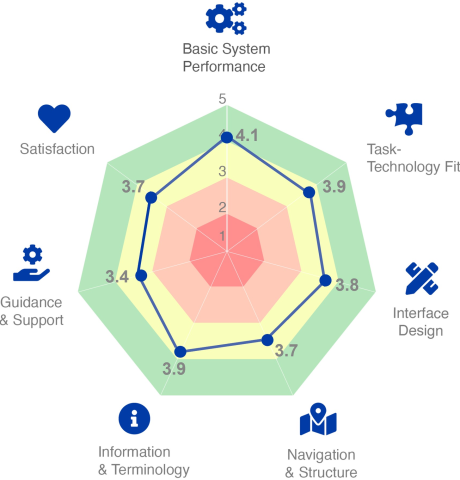A quick (but not dirty) usability scale developed specifically for eHealth applications
Usability questionnaires like the System Usability Scale (SUS) are used to assesswhether a particular software or system is effective, efficient and satisfying for aspecific user to achieve specific goals. The SUS is a very popular questionnaire,however, very generic and does not take into account the specific characteristics ofeHealth applications. To account for these, the HUBBI was developed: a newcomprehensive usability benchmarking tool for the eHealth domain.
What does it measure
HUBBI scale consists of 18 items of statements to be answered on a 5-point Likert scale. Seven categories are being assessed:

Resources
The HUBBI is currently available for download in these languagesThe results can be easily visualized in a radar chart (see example below)

More information on HUBBI
The HUBBI was developed by Marijke Platenkamp-Broekhuis as part of her PhD research. Below you can find more information on how the HUBBI came about.Blog post by Marijke Platenkamp-Broekhuis on the background of the HUBBI
Scientific article by Marijke Platenkamp-Broekhuis and Lex van Velsen on the development
of the HUBBI
PhD thesis by Marijke Platenkamp-Broekhuis



